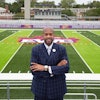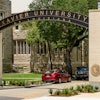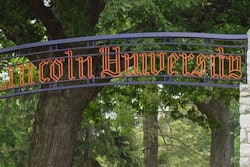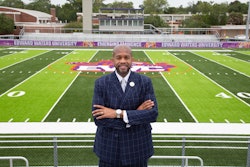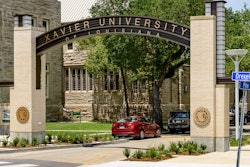Education is the most powerful weapon you can use to change the world, Nelson Mandela said in his 2003 speech, “Lighting Your Way to a Better Future.”
Enslaved people who sought freedom through education and abolitionists who used education as a catalyst to end slavery understood this idea.
So did Quaker philanthropist Richard Humphreys, who used education as a platform, changing the status of the nation, with just $10,000. In 1832, Humphreys bequeathed a portion of his estate to open The Institute for Colored Youth (ICY), a school for the descendants of the African race. This pivotal decision was the impetus that sparked a change and made it possible for modern historically Black colleges and universities (HBCUs) to exist on the current higher education landscape. The history and impact of Humphreys and ICY should not be discounted as we reflect on the past.
On Feb. 25, 2018, the Institute of Colored Youth celebrated its 181st year of pioneering and championing change through education just days after film director Stanley Nelson released the documentary “Tell Them We Are Rising: The Story of Black Colleges and Universities” – the first of its kind. The 90-minute film, selectively assembled, admirably captured and highlighted eras, key facts, figures and collective thoughts from historians who were instrumental in the success and obstacles of HBCUs.
As the film traces a trajectory of events dating back to slavery, a very important piece of history is omitted – the beginning. In the beginning was the Institute of Colored Youth, now Cheyney University.
As an addendum to the film, consider this an overview of how the story of Cheyney, the nation’s oldest historically Black institution of higher education, started the HBCU narrative.
Until the nineteenth century, access to higher education was primarily reserved for upper-class White men and the clergy, indirectly prohibiting the public education of Black people as well as poor White Americans and women. By 1835, the state legislatures of Georgia, North Carolina, South Carolina and Virginia, expressly prohibited the public education of all Black people in the South.
By contrast, some northern states passed laws that required towns to teach households, including slaves and servants, how to read and write. This early exposure to basic education provided a small number of freed Black people the ability to find rare opportunities to attend colleges in the North. Alexander Twilight was the first Black person, although not considered a citizen, to earn an American degree when he graduated from Middlebury College in 1823.
In 1837, 28 years before the emancipation proclamation and two years after the education of Black people was outlawed, the Institute for Colored Youth was established. This progressive push is the beginning of the history and story of HBCUs.
A hallmark quote of the film, restated by historian James Anderson, recounted a conversation between General O.O. Howard and student Richard Robert Wright during a visit at the Storrs school. Howard asked, “What shall I tell the people up North about the plight of former slaves?” Wright responded, “Sir, tell them we are rising.” This conversation was recorded in 1868, after the Civil War ended.
The Institute for Colored Youth paved the way for the establishment of more than 100 institutions dedicated to the education of Black people, including neighboring Ashmun Institute in 1854 (later becoming Lincoln University) and Wilberforce University in 1856. By 1880, more than 45 HBCUs had been established, almost entirely in the South. By 1932, there were 117 HBCUS in operation.
Serving as a model to other HBCUs was not ICY’s only role – the school also influenced the nation.
From the inception of the Institute for Colored Youth, there was a commitment to change that started a legacy of firsts in areas such as art, medicine, law and leadership.
Julian Abele, class of 1896, was the first Black graduate of the University of Pennsylvania Graduate School of Fine Arts. Abele changed the landscape of Philadelphia by designing the Philadelphia Museum of Art and the Free Library of Philadelphia.
Rebecca J. Cole, class of 1863, changed the face of medicine, becoming the first Black woman to graduate from the Woman’s Medical College of Pennsylvania and the second Black woman to become a physician in the United States.
Fanny Jackson Coppin, born a slave, became the first Black female college president.
I share these stories as a glimpse of the trailblazing contributions that Cheyney made to the story of HBCUS in America. If there is another film, mini-series or Netflix special that looks to tell the story of HBCUs, I implore the filmmaker to consider examining the stories of Northern HBCUs.
In addition, be sure to give Cheyney the starring role it deserves. Remember, in the beginning was Cheyney University, and we rose first!
Dr. Janelle L. Williams is a visiting scholar at the Penn Center for Minority Serving Institutions at the University of Pennsylvania.



